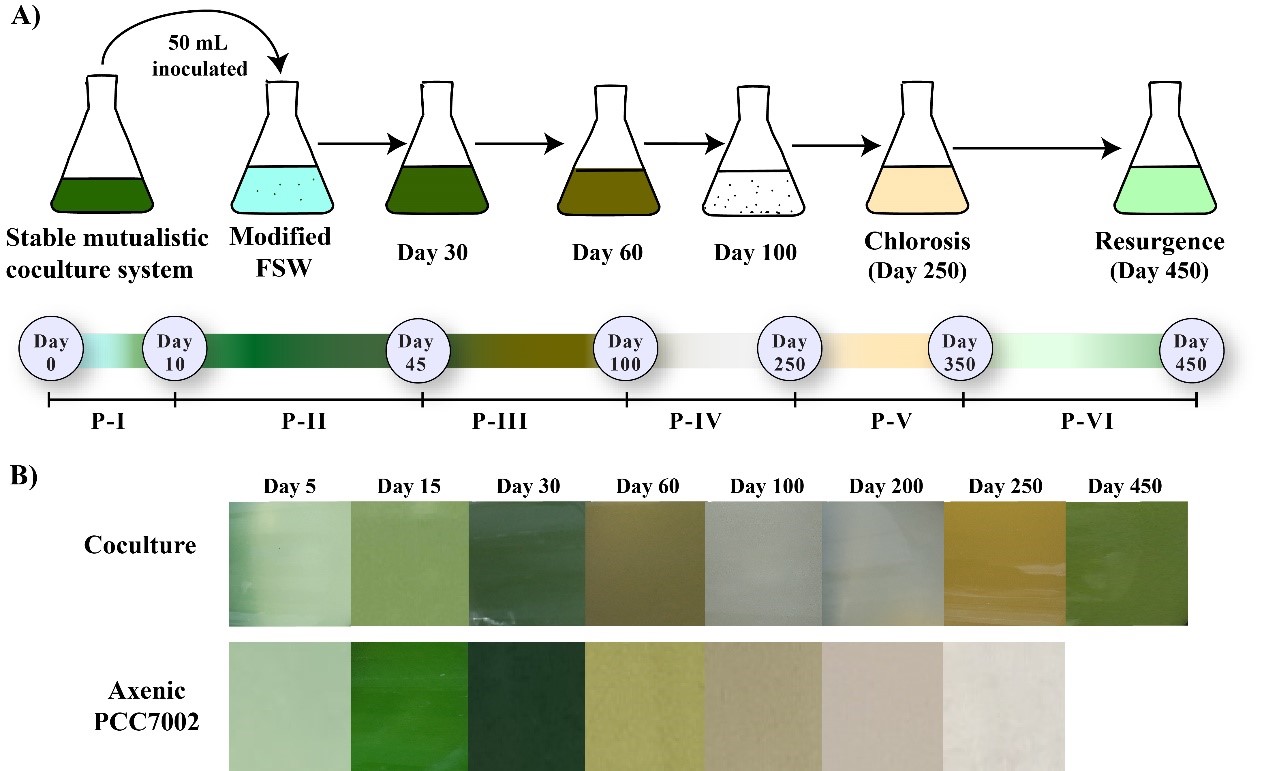Marine Phytoplankton Gets By with a Little Help from Its Bacteria Friends
Now, researchers from the Qingdao Institute of Bioenergy and Bioprocess Technology (QIBEBT), Chinese Academy of Sciences (CAS), may have discovered who to thank for the phytoplankton’s persistent existence: heterotrophic bacteria.
In a series of multi-year experiments, the team found that Synechococcus and the bacteria that feed on them may have an inherent tendency toward mutualism and will undergo significant changes to encourage each other’s survival. The marine algae Synechococcus and its associated heterotrophic bacterial community have an inseparable close relationship.
Mimicking the change in marine environment, the researchers supplied sterile inorganic nutrients to the established mutualistic coculture of Synechococcus and a diverse bacterial community from their previous study. The two-year-old stable and mutually beneficial relationship buckled but did not break.
"Our findings suggest that the availability of external nutrient sources disrupts the established mutualism, leading to the collapse of Synechococcus health," said co-first author Shailesh Nair, postdoctoral scholar at QIBEBT. "However, once the external nutrients were exhausted, over the next 450 days, Synechococcus and heterotrophic bacteria gradually re-established their metabolic mutualism under long-term coexistence that revived Synechococcus health."
Through genetic analysis and tracing the nitrogen in the system, the researchers determined that the bacteria facilitated nitrogen fixation, converting nitrogen for use in buoying the phytoplankton, which triggered the re-established mutualism.
"During the process, bacterial community structure and functions underwent tremendous adjustments to achieve the driving effect, and the bacteria’s cogeneration of nitrogen, phosphorus, iron and vitamin B12 sustained Synechococcus’s prolonged healthy growth," said co-first author ZHANG Zenghu, associate professor at QIBEBT.
These findings suggest that Synechococcus and heterotrophic bacteria may have an inherent tendency towards mutualism, which can be re-established after environmental interference. This natural, recurrent trait of Synechococcus and heterotrophic bacteria may exhibit their co-evolutionary adaptations in nutrient-deficient environments for survival.
While the researchers said they believe this study answered the longstanding question about the tenacity of Synechococcus, they now have several more questions they plan to answer.
"Does this inherent mutualistic relationship apply to other algae as well?" ZHANG Yongyu asked. "Can we boost algal growth by artificially constructing algal-friendly microbial communities? The potential regulation of algae-bacteria interactions may offer a novel way to increase algae-driven marine carbon sequestration."

(Text by ZHANG Zenghu)
Contact:
CHENG Jing
Qingdao Institute of Bioenergy and Bioprocess Technology, Chinese Academy of Sciences
Tel: 86-532-80662647/80662622
E-mail: chengjing@qibebt.ac.cn